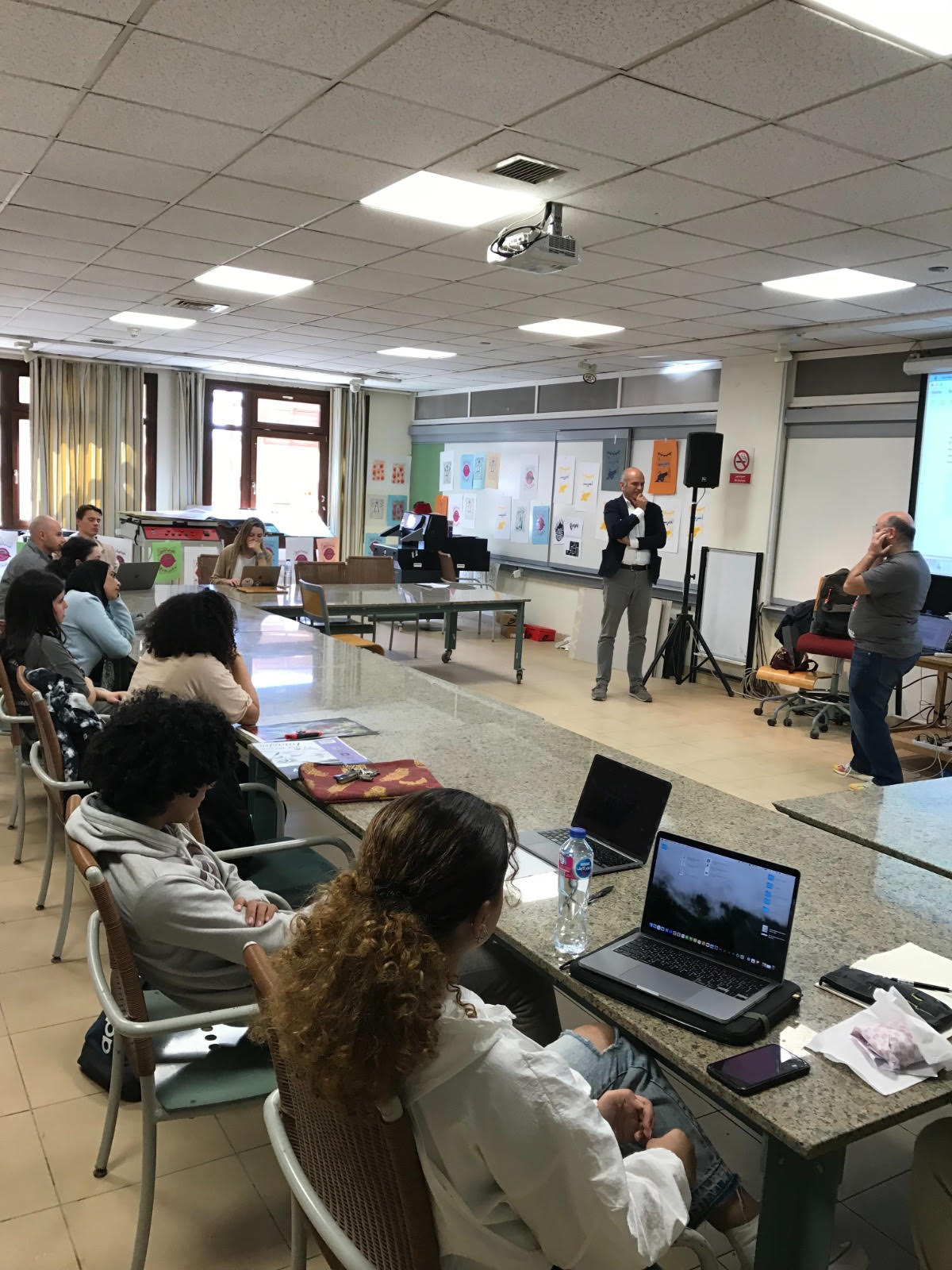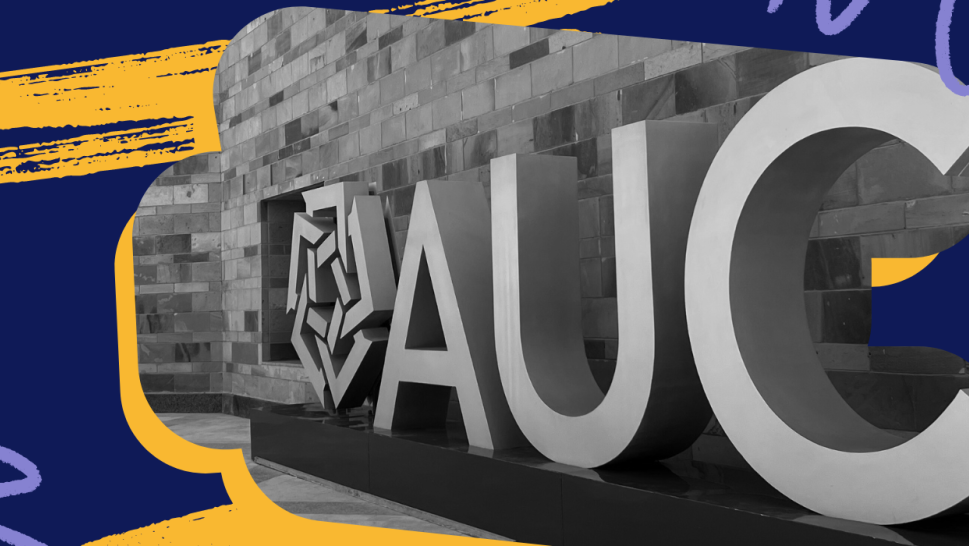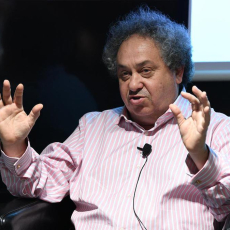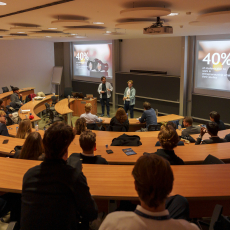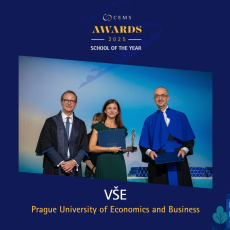However, this is not like any course: a considerable part of it is transposed beyond the classroom and in archaeological sites, museums, folkloric music concert halls, cultural institutions, traditional markets, and even traditional restaurants. Students are invited to savor the richness of Egypt’s cultural heritage and to spot the underlying business opportunities, which they will develop in their project.
But then, what makes this course special is neither the multi-disciplinary nature of the course, nor the field visits, but something totally different. The course tries to bring CEMS students as close as possible to a real-life working experience, where they must collaborate with people of different cultural, educational, and professional backgrounds, of a totally different age group and of a totally different nature.
In our case, CEMS students (who are mostly non-Egyptian) are invited to collaborate with Egyptian sophomores at AUC from the department of graphic design. This mix of creative and business students brings two totally different mindsets together to work on the same project. This strange mix teaches the students to understand that there are different ways of viewing the same subject and that the world does not rotate around business people only. It also forces business students to deal with people of different backgrounds and to come up with solutions that satisfy business and creative viewpoints. It teaches them to deal with tough situations and different mindsets.
This experience has shown impressive results that went beyond the students’ and the lecturers’ expectations. Nobody could have imagined that bringing students of totally different backgrounds could result in a common understanding and agreement among the students, a structured and methodical way of collaborating and splitting the tasks, listening to each other’s’ viewpoints and adapting according to the market needs and requirements rather than on subjective criteria.
